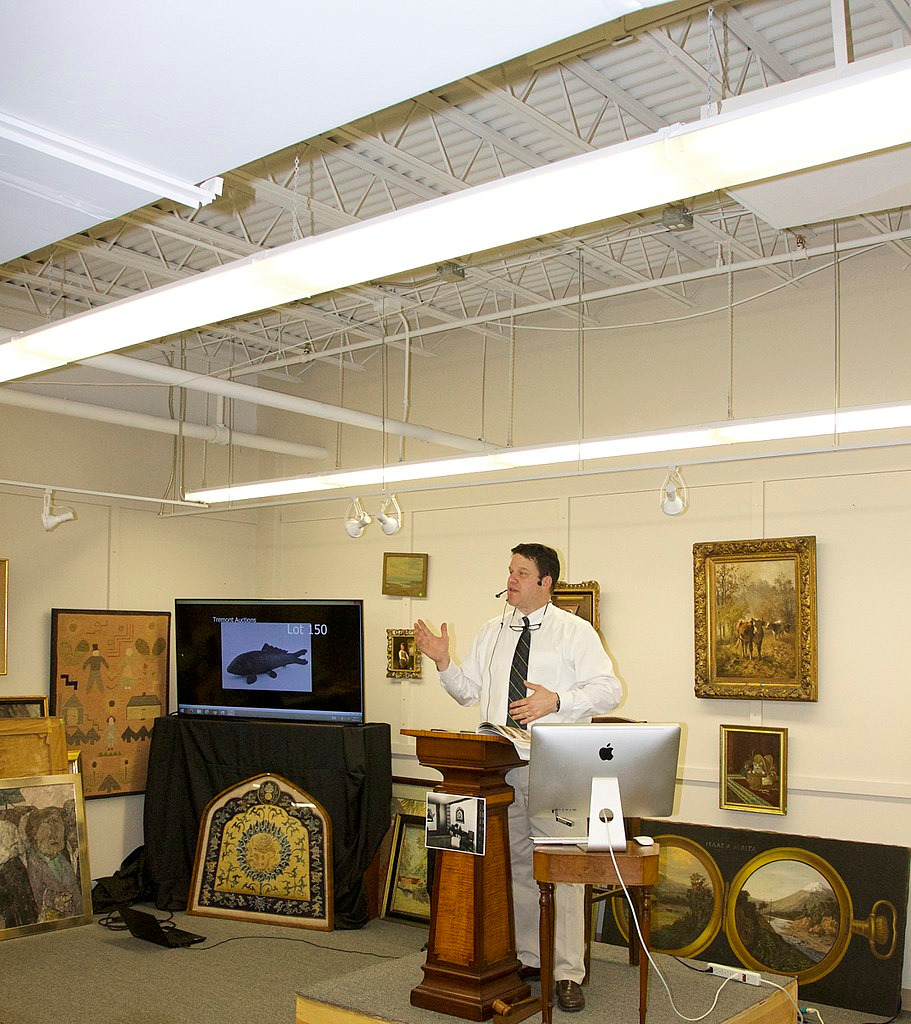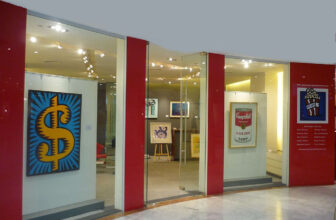
How to Collect Art as an Investment?
Investing in art has long been viewed as a way to diversify one’s financial portfolio, offering not just the potential for financial returns but also the personal enjoyment of owning something beautiful and historically significant. Art has a long tradition of value appreciation, with certain pieces selling for millions of dollars at auction, and many investors have turned to this sector as a viable alternative to more traditional forms of investing, such as stocks and bonds. However, the process of collecting art as an investment requires knowledge, strategy, and careful consideration.
In this comprehensive guide, we will explore how to collect art as an investment, from the basics of art investing to advanced strategies for selecting, purchasing, and managing a collection. Whether you are a seasoned investor or a newcomer to the world of art, this guide will provide you with the essential tools and insights to make informed decisions.
Understanding Art as an Investment
Before you begin collecting art, it’s important to understand why and how art functions as an investment. Like other forms of investment, art is a store of value that can appreciate over time. However, art is different from other assets in several key ways:
- Tangible Assets: Art is a physical asset that you can display, enjoy, and take pride in owning. Unlike stocks or bonds, it offers a tangible connection to history, culture, and creativity.
- Subjectivity and Market Fluctuations: The art market is often influenced by subjective factors such as taste, trends, and changing cultural and economic landscapes. Unlike traditional investments, art prices can be volatile and less predictable.
- Long-Term Growth: Art is typically a long-term investment. While there are occasional short-term opportunities, the true value of art tends to be realized over several years or even decades.
- Cultural and Historical Significance: Many investors seek art not just for its financial potential but also for its cultural or historical importance. Owning a piece of art with significant cultural value can be rewarding in ways beyond financial gain.
The Different Types of Art Investments
There are various forms of art that you can invest in. Each category has its own unique characteristics, risks, and potential rewards.
1. Contemporary Art
Contemporary art refers to art produced in the present day or in the recent past. The value of contemporary art can be highly volatile, as trends shift quickly and artists rise and fall in popularity. However, contemporary art is also the area of the market where the potential for significant appreciation exists, particularly for emerging artists whose works are gaining recognition.
2. Modern Art
Modern art spans the late 19th to mid-20th centuries, and it includes well-known movements such as Impressionism, Cubism, Surrealism, and Abstract Expressionism. Many of the world’s most famous artists, including Pablo Picasso, Claude Monet, and Jackson Pollock, fall into this category. While these works are often more expensive than contemporary art, they have a long history of stable investment returns, making them a safer bet for collectors seeking stability.
3. Old Masters and Classical Art
Old Masters refer to artists who were active before the 19th century, including Leonardo da Vinci, Rembrandt, and Michelangelo. Classical art is defined by works from ancient civilizations, such as Greek and Roman sculptures and paintings. Art in this category is usually very expensive and more likely to appreciate over time. However, it requires a deep knowledge of art history and a network of dealers and experts to identify valuable pieces.
4. Photography
Photography as an art form has gained significant traction in recent years. Collecting vintage photography, contemporary works, and limited-edition prints can be a great investment opportunity, particularly for collectors who have a strong understanding of photography’s history and evolution. While the market for photography is smaller than that for paintings and sculptures, it offers opportunities for growth, especially with renowned photographers.
5. Sculpture
Sculpture, like painting, can offer both aesthetic enjoyment and financial returns. The market for sculpture varies greatly, depending on the medium, artist, and historical context. While some sculptures can be affordable, others, particularly those created by renowned artists or made from precious materials—can fetch impressive sums at auction.
Researching and Understanding the Art Market
A successful art investor must first understand the intricacies of the art market. Before you start purchasing art, take the time to educate yourself about the industry, trends, and terminology.
- Auction Houses: Major auction houses like Christie’s, Sotheby’s, and Phillips play a central role in the art market. These institutions host high-profile sales where some of the most valuable artworks are sold. Auction results can give you a sense of current market conditions, price trends, and emerging artists.
- Galleries and Dealers: Art galleries and dealers are also key players in the market. Many collectors purchase artworks directly from galleries, either through exhibitions or private sales. It’s important to establish relationships with reputable galleries and dealers who have a strong track record.
- Art Fairs and Exhibitions: Art fairs and exhibitions, such as Art Basel and the Venice Biennale, offer great opportunities for collectors to explore new art, discover emerging artists, and stay on top of industry trends. These events often attract major collectors, critics, and curators, and can be a good indicator of what art is gaining traction in the market.
- Art Publications and Criticism: Art publications like ArtForum, ArtReview, and The Art Newspaper provide insights into the latest trends, artist profiles, and exhibition reviews. Staying informed through art criticism can help you make more informed decisions when collecting art.
- Price Realization and Market Trends: Study past sales data to track how the prices of certain artists or art movements have evolved over time. Resources like the Artprice database and Artnet Auctions allow you to look at auction results and market reports to gauge the trajectory of specific artists and art forms.
Building Your Art Collection
Once you have a good understanding of the art market, it’s time to start building your collection. Here are some key steps to guide you:
1. Set Your Budget
Art can be very expensive, so it’s essential to set a realistic budget before you start buying. Determine how much you are willing to invest, taking into consideration both your financial goals and your personal preferences. Many investors choose to start with mid-range priced art and then work their way up as they gain more experience.
2. Develop Your Taste
Your art collection should reflect your personal taste, interests, and passion for art. While you may be buying art as an investment, owning a piece that resonates with you on a personal level can make the experience much more rewarding. Take the time to explore different artists, movements, and mediums to discover what you truly enjoy.
3. Focus on Quality Over Quantity
It’s tempting to buy many pieces when starting your collection, but it’s more important to focus on the quality of the art you buy. A few well-chosen works by emerging artists, or a strong piece by a well-established artist, will likely yield better returns over time than a large quantity of less valuable works.
4. Diversify Your Collection
Diversification is key when building a collection. By acquiring pieces across different genres, artists, and time periods, you can spread your risk and potentially increase your chances of achieving higher returns. For example, you might choose to invest in a mix of contemporary art, modern art, and sculpture, or focus on a specific niche, such as photography.
5. Establish Relationships with Experts
Working with art consultants, advisors, and specialists can help you make better investment decisions. These professionals can provide you with expert insights into the market, suggest artists with strong potential for growth, and even help you acquire rare pieces that might not be publicly available.
Protecting and Managing Your Art Investment
Once you’ve started building your collection, it’s important to protect and manage your assets to ensure they maintain their value over time.
1. Proper Documentation and Provenance
Ensure that you have all the necessary documentation for each piece of art in your collection, including certificates of authenticity, provenance records, and any relevant exhibition history. Provenance (the history of ownership) is critical for establishing the legitimacy and value of a work of art.
2. Insurance
Art is vulnerable to theft, damage, or destruction. It’s essential to insure your collection with a reputable insurance company that specializes in art. The value of your collection will likely increase over time, so make sure your policy reflects the current value of the works.
3. Storage and Display
Proper storage and display are crucial to preserving the condition of your art. For delicate works, such as paintings on canvas, ensure that they are kept in a climate-controlled environment with appropriate light and humidity levels. Sculptures and other three-dimensional works may require custom storage solutions to protect them from damage.
4. Regular Appraisals
Art is a dynamic investment, and its value can change over time. It’s important to have your collection appraised periodically by a professional appraiser who can provide an updated valuation. This will help you track the performance of your investments and make informed decisions about buying or selling pieces.
5. Selling Your Art
When it’s time to sell your art, consider the best method to achieve the highest return on investment. Auction houses, private sales, and art galleries all offer different avenues for selling art. Each method has its pros and cons, so it’s important to research which option is best for your specific piece.
Collecting art as an investment can be a rewarding and profitable endeavor, but it requires careful planning, knowledge, and a strategic approach. By understanding the art market, focusing on quality and diversification, and protecting your collection, you can increase your chances of seeing long-term financial returns. Remember that art investment is often a marathon, not a sprint, and the most successful collectors are those who have the patience to wait for their pieces to appreciate over time.
With the right approach, art can not only enrich your life aesthetically but also serve as a valuable financial asset. Whether you’re collecting works by contemporary artists or investing in timeless masterpieces, art offers unique opportunities for both personal enjoyment and financial gain. image/wikimedia





